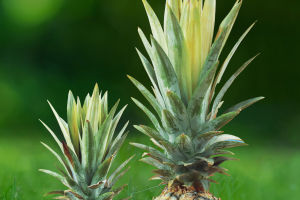Meringue Magic
Meringue, commonly associated with French and Swiss culinary traditions, is a delightful foam cake dessert renowned for its delicate, sweet taste.
This ethereal confection is primarily crafted by whipping egg whites and white sugar.
Depending on the intended application, variations can include the addition of cream of tartar, vinegar, or hot syrup. The hallmark of a perfect meringue is achieving stiff, peak-like consistency.
Homemade meringues typically feature a soft interior and a crisp exterior, while commercially produced meringues tend to have a uniformly crisp texture.
Let's delve into the process of making meringue:
Ingredients:
2 egg whites
35 grams of powdered sugar
45 grams of granulated sugar
10 grams of cornstarch
Instructions:
Begin by gathering your ingredients and separating the egg yolks from the egg whites. Ensure that the egg whites are placed in a clean, dry, and oil-free container.
Using an electric egg beater, start by whisking the egg whites at a low speed for a few seconds, gradually increasing the speed until they reach a rough, foamy state.
Add one-third of the granulated sugar, then switch to medium-high speed and continue beating until fine foam forms.
Incorporate another third of the granulated sugar and shift to high speed, beating until the mixture exhibits a grainy texture.
Finally, add the remaining sugar and continue beating until the meringue reaches a nearly dry, stiff peak consistency. You'll know it's ready when the meringue forms sharp peaks when the beater is lifted.
Gently fold in the cornstarch to the beaten egg white mixture using a silicone spatula. Be careful not to overmix, as it may deflate the meringue
Gradually fold in the powdered sugar until well combined. Again, avoid overmixing to prevent deflation.
Your meringue should now be well-incorporated and have a smooth texture.
Attach a piping nozzle to the end of a piping bag and fill it with the meringue mixture.
Squeeze the meringue onto a baking tray lined with parchment paper or oiled paper. Preheat your oven to 160 degrees Celsius.
Baking: Begin by baking the meringue at 160 degrees for the first 15 minutes, then lower the temperature to 100 degrees and continue baking for approximately 40 minutes. Please note that the exact baking time and temperature may vary depending on the size of your meringue.
After baking, leave the meringue in the oven and remove it only when the surface has hardened. This ensures that your meringue remains delightfully crisp.
Additional Tips:
When preparing the egg whites, make sure the container is completely free of oil and water. Even a small amount of egg yolk contamination can hinder the formation of stiff peaks in your meringue.
If you wish to eliminate any potential eggy odor, you can add a few drops of lemon juice or white vinegar while whipping the egg whites.
For a touch of color in your meringue, add a small drop of food coloring to the egg whites before whipping. Different nozzle designs can also create various decorative effects.
It's crucial to allow the meringue to cool completely before attempting to remove it from the baking tray.
If it proves difficult to remove even after cooling, this may indicate that it's not thoroughly baked, in which case you can bake it for a few more minutes.


